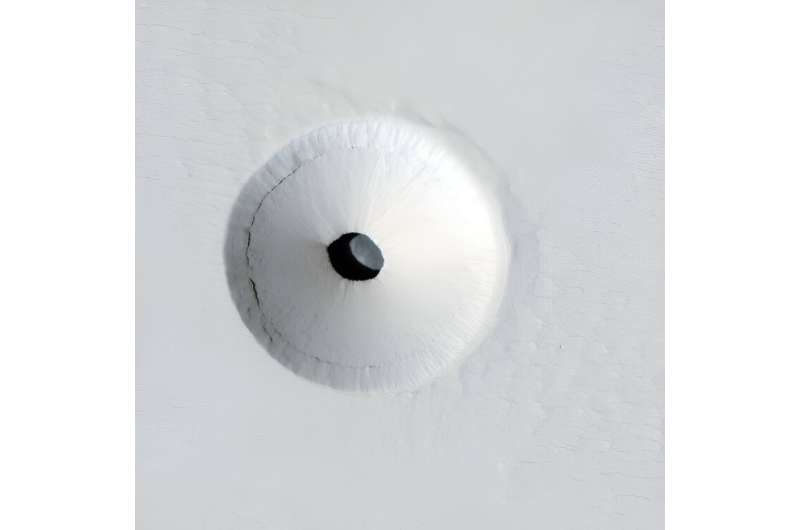For the study, Dr. Vidmachenko examined several locations across Mars that have been found to possess lava caves and lava tubes suitable for future first-time settlements, including Arsia Mons, which is one of three extinct volcanoes that comprise Tharsis Montes.
It is here that a 2007 study presented at the 38th Lunar and Planetary Science Conference discussed seven alleged skylights observed from orbital images that were later interpreted to be entrances to lava caves. This recent study mentions that the diameters of these lava caves could be between 100 and 250 meters (328–820 feet) wide.
"Such reliable caves can be used to create the first permanent settlements," the study notes. "They will allow you to reliably protect yourself from powerful radiation exposure. And a certain drawback will be the need to organize the delivery of water ice to provide the settlers with water resources and raw materials for extracting the much-needed oxygen and hydrogen fuel for rocket engines."
The study mentions several other locations across Mars where pits or skylights have been observed, including Hebrus Valles, the Pavonis volcano, Ascraeus Mons, Acidalia Planitia (whose surface location was featured in The Martian), and Cydonia Mensae.
Additionally, the study discusses how lava channels, caves, or tubes close to sources of water ice would also prove beneficial for future astronauts, which could significantly reduce the costs of shipping and storing water on their spacecraft for the initial journey to Mars.
"The best case would be a lava tube with strong walls found next to powerful glacial structures," the study notes. "The colony itself, most likely, will have the appearance of separate premises, with residential, engineering, elevator and greenhouse compartments. They will have to be connected to each other by small transition tunnels to control the pressure and composition of the artificially created atmosphere in them."
Lava tubes were featured prominently in the National Geographic television series, Mars, which depicted the first astronauts to the Red Planet and their quest to survive the harsh environment. During their journey, lava tubes provided shelter from the cosmic and solar radiation while also having large deposits of water ice at their disposal which they used for drinking and rocket fuel while drastically reducing the amount of water they initially had to bring during their journey.
The reason why cosmic and solar radiation rains down on to the Martian surface daily is due to the lack of protective ozone layer and magnetic field that exists on Earth and helps deflect this deadly radiation from reaching our surface, enabling life to exist here for billions of years. While Mars might have had both mechanisms billions of years ago, the interior of the Red Planet has since cooled drastically, causing these protective features to be stripped away by the solar wind and lost to space.
This study comes as NASA plans to send humans back to the moon for the first time in over 50 years, and eventually Mars, as part of the agency's Moon to Mars Architecture. Therefore, adequate preparation prior to sending the first astronauts to the Red Planet would prove beneficial in increasing their chances of survival throughout the entire journey, and this study highlighted several ways lava tubes could do just that.
More information: Which Caves on Mars Are Safer to Live In? www.hou.usra.edu/meetings/lpsc2024/pdf/1028.pdf
Provided by Universe Today



